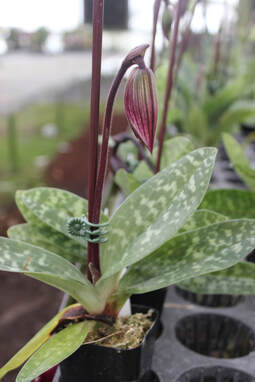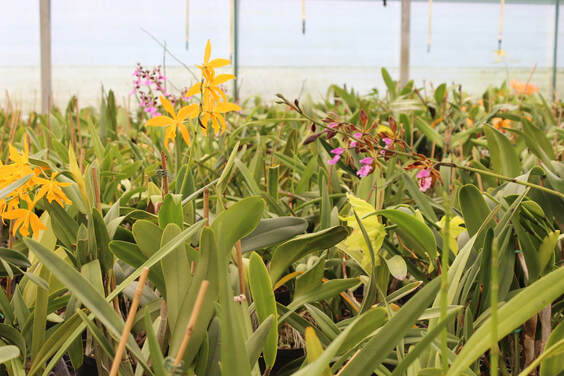|
Better-GroOrchidBlog
Have you ever taken the time to compare the growing structure of an orchid? Obviously, blooms can vary widely across the thousands of orchid varieties that exist. But the basic growing structure of an orchid boils down to essentially two types: Monopodial and Sympodial.  Paphiopedilum (also known as Lady Slipper orchids) are a Monopodial orchid. Paphiopedilum (also known as Lady Slipper orchids) are a Monopodial orchid. Monopodial Orchids Have One Root System Monopodial orchids have one stem, or, technically speaking, one root system. “Mono” is Greek for “one,” and “podia” translates from Greek as “foot” or “leg.” Since plants don’t have feet, podia is used to describe their roots. “Monostemic” technically means “one stem,” but monopodial is often used to describe monostemic orchids because monopodial orchids usually only have one stem, and orchids with one stem always have one root system. All of a monopodials’ leaves and flowers grow from its single stem, unless one of the nodes at the base of the stem sprouts a basal keiki. A basal keiki is a little stem, and can grow into a fully, beautiful stem, but it’s not a complete orchid in its own right. It lacks a root system, sharing the root system of the main stem. Thus, while monopodial orchids may develop basal keikis and eventually can have several stems, they always have only one root system. Significantly, monopodial orchids don’t have pseudobulbs. Any water reserves they have are in their roots and leaves. Many phalaenopsis, paphiopedilum and vanda orchids are monopodial.  Sympodial Orchids in the Greenhouse at Better-Gro Sympodial Orchids in the Greenhouse at Better-Gro Sympodial Orchids Have Multiple Root Systems Sympodial orchids are characterized by their multiple root systems. “Sym” can be translated from Greek into English as “with,” “joint,” “together” and “sharing.” A sympodial orchid has a stem that grows pretty close to the ground, although their flower spikes are sometimes mistaken for stems. From this low-growing stem, which is called a rhizome, sprout pseudobulbs, one growing from the base of the previous one. Each pseudobulb grows its own flower spike and root system, hence the name sympodial. Pseudobulbs look like flower bulbs, but they aren’t bulbs. Their main purpose is to store water, providing a reserve supply should the growing medium around the flower dry out. Cattleya, cymbidium, dendrobium and oncidium orchids are sympodial. Caring for Monopodial and Sympodial Orchids
Monopodial and sympodial orchids have many similar needs, but there are two minor points where the care they need differs. First, repotting sympodial orchids can be slightly more involved than repotting monopodial ones. Repotting monopodial orchids is pretty straight-forward. The plant should go in the center of the pot so it can grow out towards the edge of the potting medium in all directions. Because the pseudobulbs of sympodial orchids can grow in any matter of patterns, it can sometimes take a little more creativity to center a sympodial orchid in a pot. Additionally, some pseudobulbs, particularly new ones with young root systems, may need to be anchored with clips or other methods. Second, monopodial orchids usually need more regular waterings than sympodial ones. Because monopodial orchids lack the pseudobulbs that sympodial orchids have, monopodials will dry out faster if they aren’t well watered. In general, monopodial orchids should be watered as their potting medium becomes dry. Sympodial orchids can often go a little while after their medium dries out before they need water. Both monopodial and sympodial orchids are fun to grow and become beautiful plants. For more information on different types of orchids and orchid care, visit www.EasyOrchidGrowing. Happy Blooming! Comments are closed.
|
Resources
|
Company |
|
